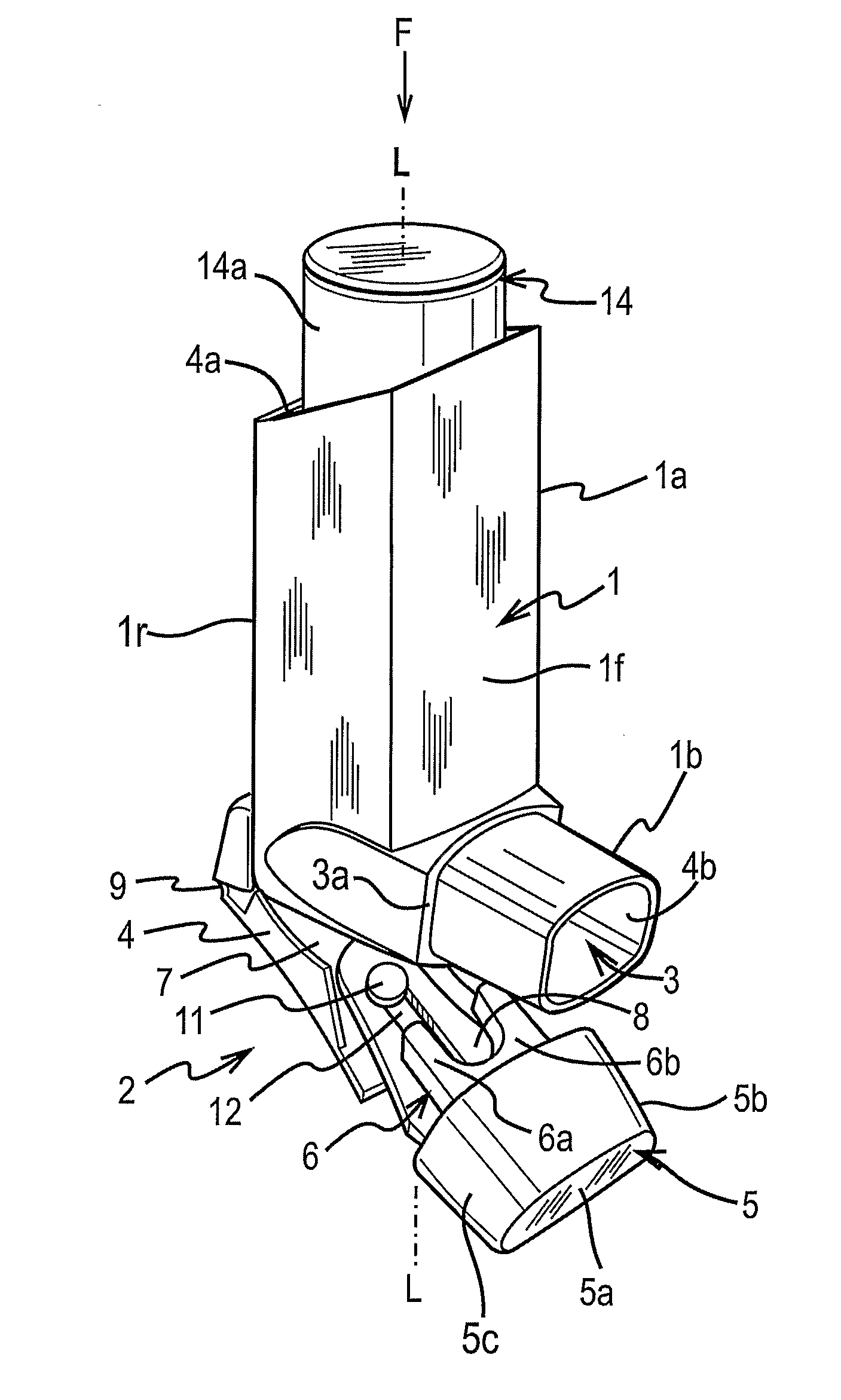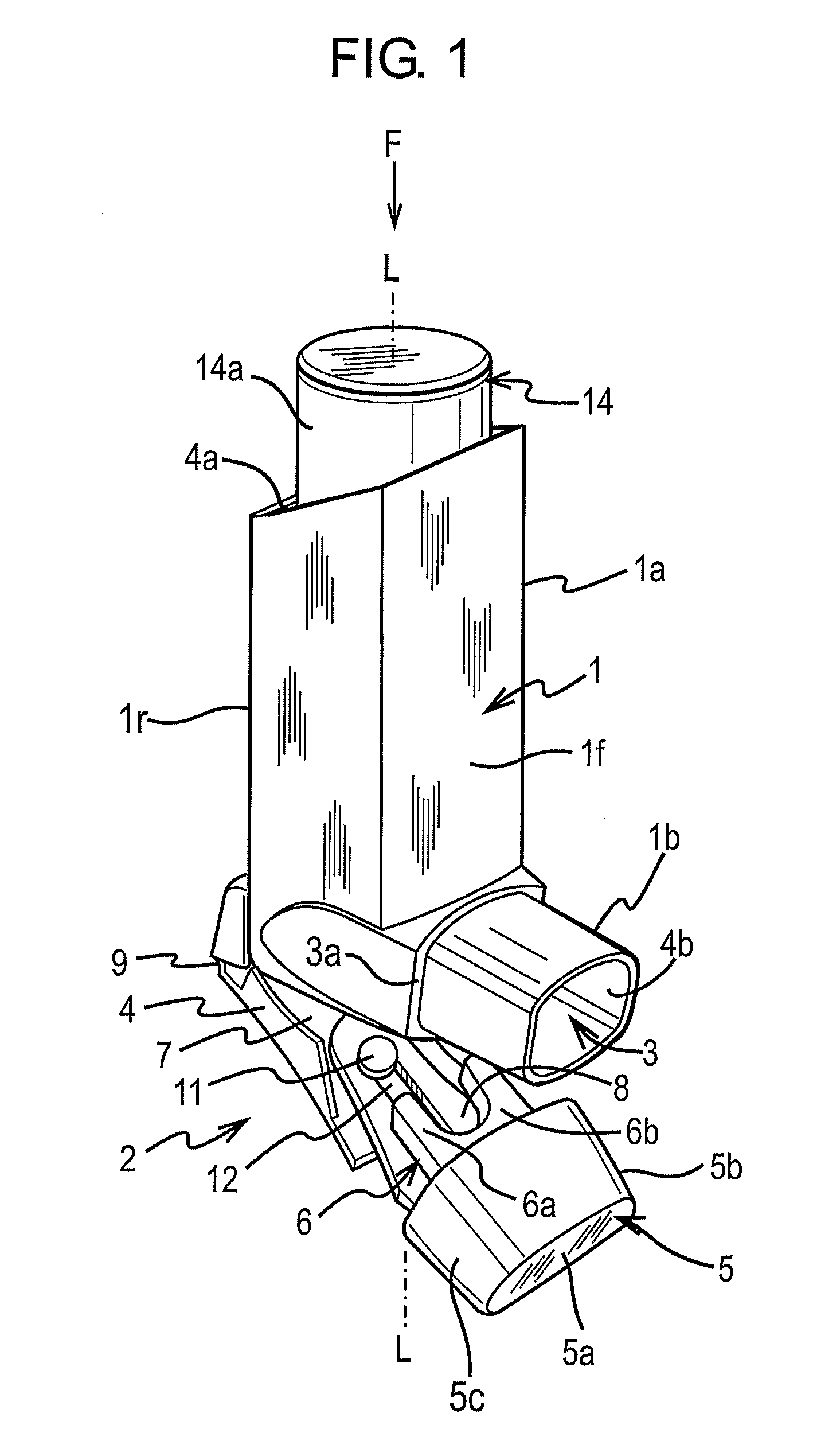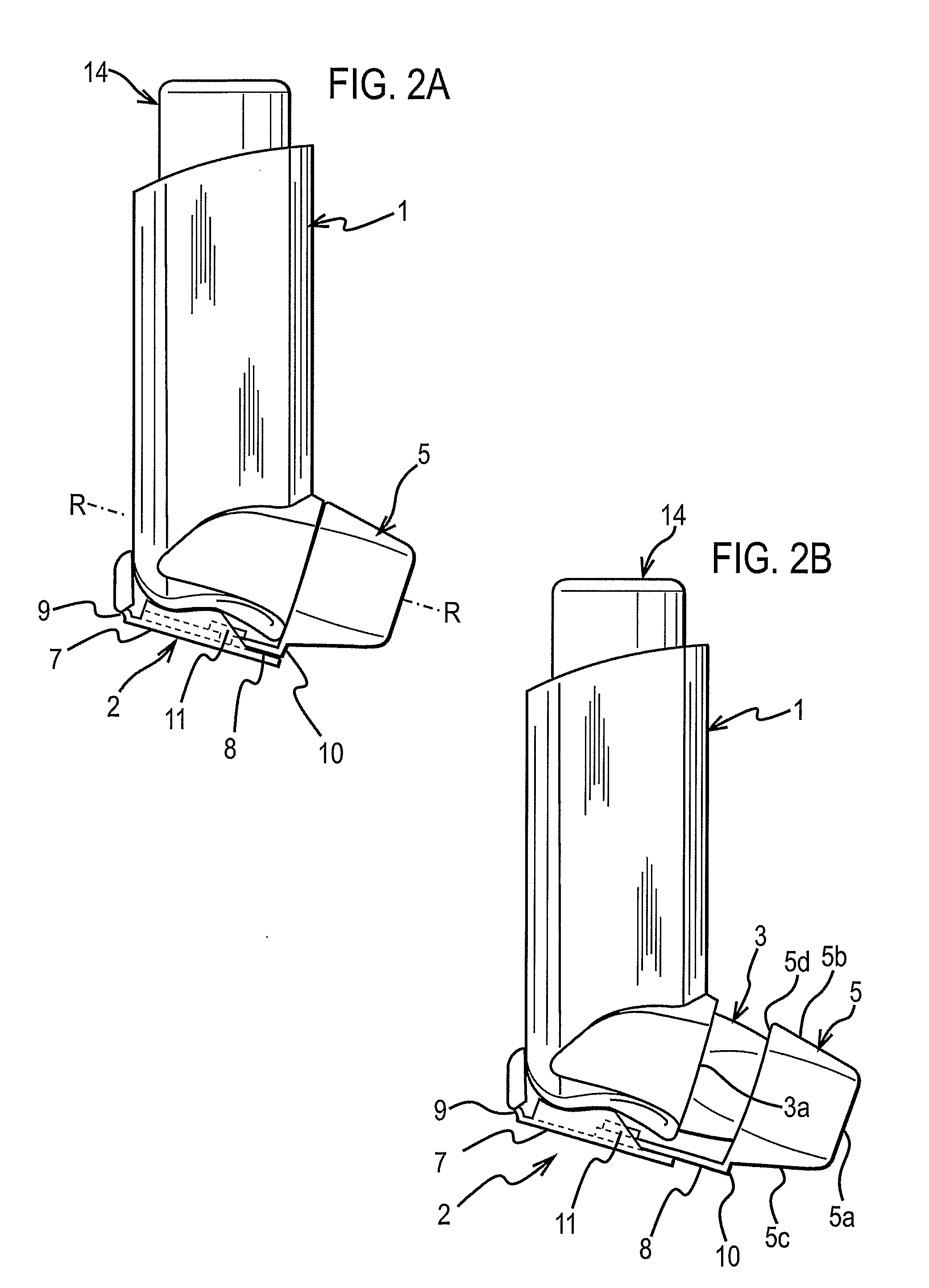Dispensing Device
a technology of a dispenser and a counter, which is applied in the direction of medical devices, inhalators, other medical devices, etc., can solve the problems of increasing or decreasing the value displayed to the user by the counter, the device is susceptible to unintentional actuation, and the value displayed to the user is often subject to impact and sudden movement, so as to prevent the dispensing of the dose of the medicament formulation
- Summary
- Abstract
- Description
- Claims
- Application Information
AI Technical Summary
Benefits of technology
Problems solved by technology
Method used
Image
Examples
first embodiment
[0068]FIGS. 1 and 2 are respectively front, perspective and side views showing a pMDI according to the present invention. In this embodiment, the pMDI is based on a pMDI known in the prior art, as described in the ‘Background of the Invention’ section supra, although the present invention is not limited to the exact form of such an arrangement.
[0069]The pMDI comprises a canister unit 14 and a housing 1 in which the canister unit 14 is slidable along its longitudinal axis L-L. The housing 1 is generally tubular and of L-shape having an axial section 1a and a transverse section 1b configured as a mouthpiece 3. The housing 1 is preferably moulded from a plastics material, for example by injection moulding. Conveniently, the housing is of polypropylene. In the use orientation of the pMDI shown in FIGS. 1 and 2, the housing 1 has an upper open end 4a in the axial section 1a, through which the canister unit 14 is reversibly slidable into the housing 1, and a lower open end 4b in the mouth...
second embodiment
[0087]In the second embodiment the first component 7 of the telescopic strap 2 has a distal track member 7a with opposed side walls 4. At the distal end of the track member 7a the side walls 4 are bridged by a bridging element 4c. At the proximal end of the first component 7 there is a hinge member 7b which is secured to the housing 1. The track and hinge members 7a, 7b are hinged together by the hinge 9 whereby the track member 7a is hingable about the hinge member 7b.
[0088]As regards the second component 8 of the telescopic strap 2, this has a proximal slide member 8a which is linearly slidable in the track member 7a and guided in its linear stroke by the side walls 4. The slide member 8a has a resilient finger 8m at its proximal end which presents a stop element 8b which engages with the bridging element 4c to demark the extended position of the strap 2 and to keep the slide member 8a captive in the track member 7a. At the distal end of the second component 8 there is provided a...
third embodiment
[0099]In the invention, shown in FIGS. 4A and 4B, the dust cap 5 has elongated sides 13 which are disposable on opposed sides of the lateral section 1b of the housing 1. A pin 16 is provided on each side of the housing lateral section 1b. Each elongated side 13 of the dust cap 5 has a slot 15 along its length, which has closed ends. The slots 15 hold the pins 16 captive. The arrangement of the slots 15 and pins 16 secures the dust cap 5 to the housing 1, whilst permitting the dust cap 5 to be rotated about the common axis A-A of the pins 16 and moved towards and away from the mouthpiece 3 along the length of the slots 15.
[0100]To remove the dust cap 5, the user pulls it away from the mouthpiece 3, sliding the pins 16 within the slots 15. The user then rotates the dust cap 5 about the pins 16, swinging it below the housing 1 to prevent it obstructing the mouthpiece 3. The dust cap 5 is then reapplied by swinging it back into a position in front of the mouthpiece 3 and then sliding it...
PUM
 Login to View More
Login to View More Abstract
Description
Claims
Application Information
 Login to View More
Login to View More - R&D
- Intellectual Property
- Life Sciences
- Materials
- Tech Scout
- Unparalleled Data Quality
- Higher Quality Content
- 60% Fewer Hallucinations
Browse by: Latest US Patents, China's latest patents, Technical Efficacy Thesaurus, Application Domain, Technology Topic, Popular Technical Reports.
© 2025 PatSnap. All rights reserved.Legal|Privacy policy|Modern Slavery Act Transparency Statement|Sitemap|About US| Contact US: help@patsnap.com



